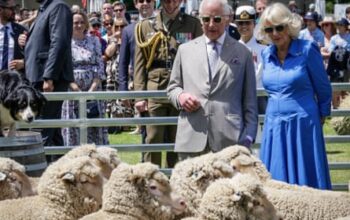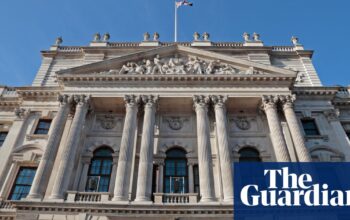
A bishop of the Church of England has suggested that churchyards be allowed to grow naturally in order to promote biodiversity and transform them into “spaces for the living, not just the deceased”.
The Church of England is in charge of maintaining approximately 7,100 hectares (17,500 acres) of churchyards in England. They also possess around 34,000 hectares of farmland, which is mostly leased to tenant farmers, and 9,300 hectares of forests.
The General Synod, which is in charge, will decide this month on a proposal to promote biodiversity and urge the Church of England to create “land action plans” at the local, regional, and national levels.
The bishop of Norwich, Graham Usher, emphasized the importance of preserving the biodiversity of the historic land which includes ancient trees and hedgerows. He urged the church to consider ways to improve and enhance this biodiversity.
He stated that churchyards were generally unchanging, with the exception of occasional digging. Usher proposed the idea of leaving certain sections of churchyards unmowed in order to promote the growth and blooming of rare plant species.
He expressed his desire for churchyards to be more than just a place for the deceased, but also a place for the living.
A document presented at the synod gathering in London suggests that churchyards have significant potential for biodiversity. Yet, it also acknowledges that these areas hold significance for the surrounding communities. Due to their importance as burial grounds, efforts to enhance biodiversity in churchyards must take into account public accessibility and sensitivity towards mourners.
According to the paper, the Church of England’s land, which is owned nationwide, has traditionally been used to supplement the church’s income, especially in financially disadvantaged areas. There has been a consistent effort to promote biodiversity and reduce carbon emissions on these land holdings.
Usher stated that the church should collaborate with its tenant farmers to achieve positive effects on nature. He also mentioned that when actions are taken for the benefit of nature, they often have positive outcomes for both business and people.
The Church of England has released guidelines for parishes on promoting biodiversity. This includes leaving sections of grass to grow long, establishing wildflower zones, installing bird and bat homes, caring for bees, and fostering hedgehogs.
Several churches have implemented strategies to preserve and promote biodiversity. For instance, St Mary’s in Wargrave, Berkshire has ceased routine grass cutting and trimming in order to encourage the growth of wildflowers and create a habitat for various animals and insects. Additionally, they have transitioned from using fuel-powered equipment to a scythe for maintenance of the rewilded section.
Mike Buckland, the “eco church” lead at St Mary’s, said: “The scythe allows more control over what is cut when we want to encourage native wildflowers to reseed as well as reducing the carbon emissions to zero and the noise impact.”
The church’s routine wildlife assessments have revealed a growth in plant and animal life since the rewilding efforts started.
Source: theguardian.com



